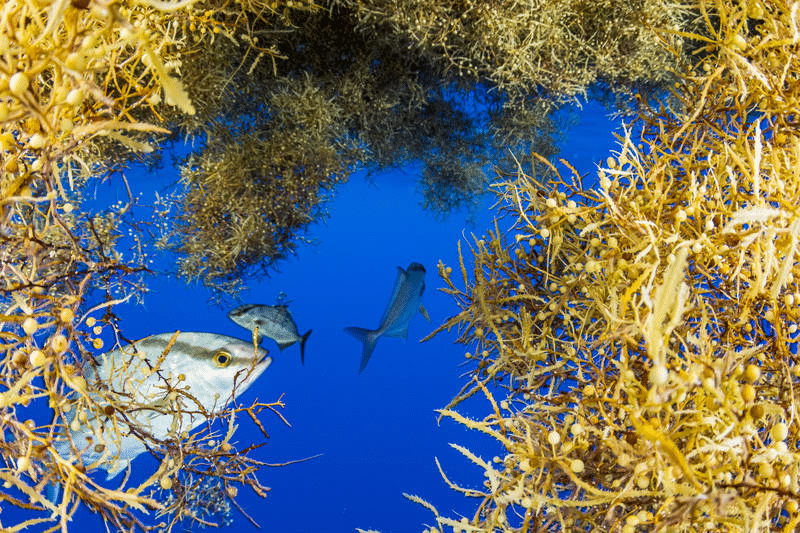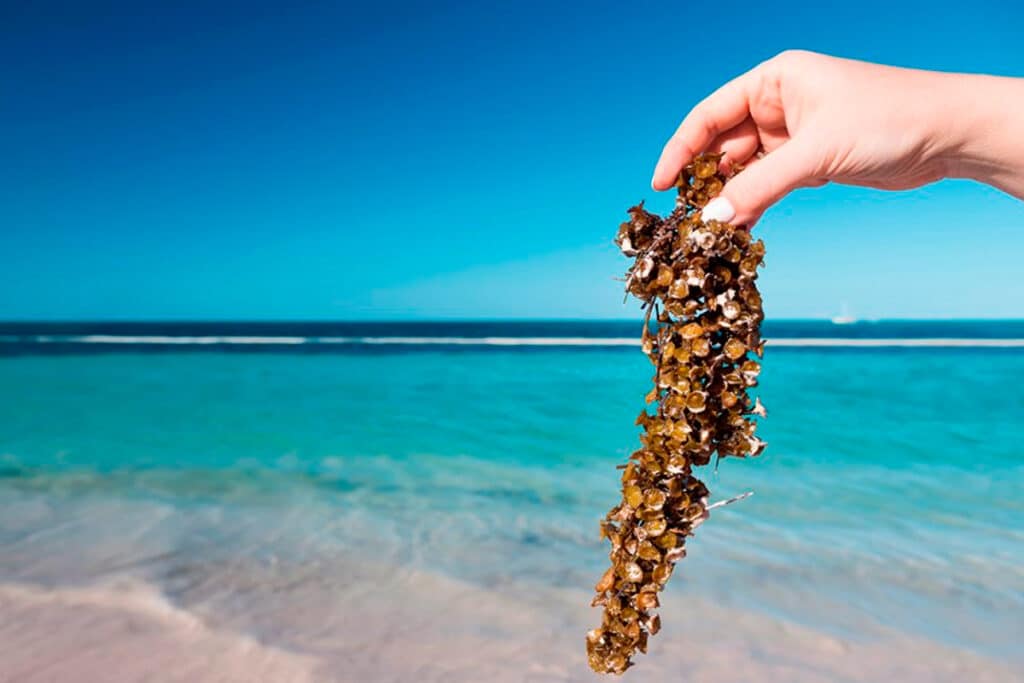The Mexican Caribbean is world-renowned for its white-sand beaches, turquoise waters, and tropical climate that invites relaxation. Cancún, Quintana Roo, has been awarded Mexico and Central America’s Leading Beach Destination, and recognized by TripAdvisor as Mexico’s top tourist destination and #24 globally. Even Playa Delfines in Cancún ranks among the best beaches worldwide.
However, this idyllic scene faces a growing environmental challenge: sargassum.

What Is Sargassum and Why Is It Arriving in Cancún?
Sargassum is a brown macroalga (genus Sargassum) that floats in the ocean and plays vital ecological roles, serving as habitat for fish, turtles, crustaceans, and seabirds. Historically, it was largely confined to the Sargasso Sea, a region of the North Atlantic near Bermuda.
Since 2011, however, massive sargassum influxes have been recorded in the Caribbean—especially in Cancún and the Riviera Maya. These algae originate from the Atlantic Sargassum Belt, formed off West Africa and carried by currents across the ocean to Mexico.
The mix of excess nutrients (fertilizers, wastewater), deforestation, climate change, and warming sea temperatures creates ideal conditions for sargassum to double its biomass in under 20 days.

Environmental and Economic Impacts of Sargassum
Although sargassum is ecologically valuable offshore, its coastal proliferation poses a challenge for coastal communities:
- It blocks sunlight and raises water temperature, disrupting marine life.
- It harms coastal species and reduces water quality during decomposition.
- It emits gases like hydrogen sulfide and ammonia, which are unpleasant and can pose health risks.
- It detracts from the allure of beaches, impacting hotels, restaurants, and local commerce.
- It complicates fishing and affects coastal livelihoods.
A 2021 study in Climate Change Ecology found that beneath sargassum mats, sunlight levels drop by up to 73% and water temperatures can increase by as much as 5 °C, jeopardizing entire ecosystems.

How Are Authorities and Communities Responding?
Government, local communities, and businesses in Cancún have launched several initiatives to tackle this ecological issue:
- Mechanical and manual beach cleanup efforts.
- Deployment of sargassum containment barriers offshore.
- Research into repurposing sargassum—from fertilizers and biofuels to cosmetics.
- Support for fishing communities to relieve economic impacts.
The state of Quintana Roo has issued official sargassum declarations to coordinate federal, state, and municipal resources and actions.



